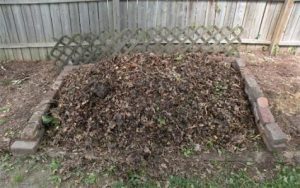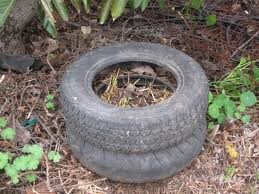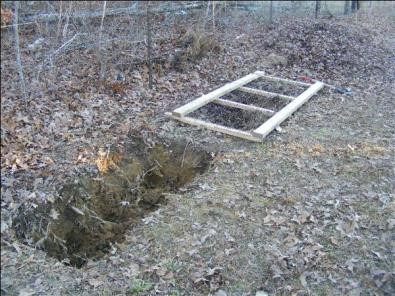
Figure 1: Making-Compost. (Source: https://www.ci.superior.wi.us/483/Making-Compost.)
Since long time ago human kind has practiced composting as a common activity and, therefore, nowadays there are many different techniques available for processing our organic waste and turn it into a natural soil conditioner or fertilizer at home. Such practice contributes to close the natural cycles of carbon, nitrogen and phosphorous and avoids the need of the application of artificial fertilizers in agriculture.
To this day, there are various methods for composting, which can be classified, in a very general way, as centralized and decentralized systems, static and dynamic techniques and high-tech and low-tech processes. Each one of them has its own treatment time, feedstock capacity, degree of degradation, compost quality, emissions, maintenance period and costs, among other characteristics. Here a brief description of these classifications:
· Centralized and de centralized systems
In this classification the difference lies mainly on the location, distribution and size of the composting plants. A centralized composting system consists of a large scale facility that is able to receive and treat the total amount of organic waste generated by a big village or city, while a decentralized composting system will consist of many small scale plants that treat smaller amounts from nearby small areas. The decentralized system can be found often in rural areas.
In this respect, the dwelling´s inhabitants and housing density, waste generation, roads infrastructure, population, develop projection, among others, play key roles for the selection criteria of the system.
· Static and dynamic techniques
Basically, the distinction between both techniques consists in whether the technique considers the turning or mechanical mixing of the composting material or the material remains static without any mixing instead.
Static or batch methods have many advantages in terms of breakdown frequency, cast, sanitization, compost quality, and emission control, while dynamic methods are characterized by continuous movement and aeration of the composted material.
In the dynamic method, due to the fact that the material is continuously mixed or turned, mold, which contributes to complete decomposition, cannot be formed. Also, dynamic composting processes have the advantage of contributing to the continuous homogenization of the feedstock.
· High-tech and low-tech processes
The differences between them depend mostly on the amount of technology that they require to treat the organic waste. The foregoing, coupled with the amount of money needed to implement such treatment and the level of qualification and knowledge required for the operation of the process.
The previous classifications are based on different points of view and, thus, these systems, processes and technologies mix within them to form the different composting methods.
Composting at home or domestic composting belongs to a decentralized system, in which commonly a static low-tech process is implemented.
For domestic or household composting, the most used methods are the so called backyard composting methods, which can be done in homemade containers, commercial bins, as an open pile, using old tires, using a wire mesh for stake fence piles or even in plastic bags.
The ideal size of the pile or bin is 1 m3 with a capacity of 1,0-1,5 m3/month. The required area for composting is 1-5 m2 and it is argued that 1 m2 is the optimal amount of land required for simple composting.
Some of the most popular backyard composting methods used are the following:

Figure 2: Open pile system for garden composting (www.greeniacs.com, Make your own compost.)
Open pile/static system
Open pile is a simple, basic, low-tech composting method, which does not require an enclosure. Biodegradable feed stock is simply piled up on a heap and turned once in a while for aeration. The method requires minimal labor and investment costs and is well suited for backyard composting. This composting method is slow and can lead to odor emission if food waste is incorporated or when large quantities of green materials are added.

Figure 3: Stake fenced system (Source: www.webberenergyblog.wordpress.com, Example of an open compost bin.)
Stake fenced system
Metal, wooden or bamboo stakes are driven into the ground to form a simple circular or square enclosure of approximately 1 m2. Chicken wire is use to fence the pile. Plastic sacks can substitute chicken wire.

Figure 4: Wooden compost bin (Source: www.csmonitor.com, How to keep animals out of the compost pile)
Wooden or plastic compost bins
A square or circular wooden compost bin is constructed from old lumber. Old galvanized iron can also be used. Aeration is enhanced by manual turning at irregular intervals. This method uses a discarded garbage can that is perforated on all the four sides including the bottom. The perforations ensure aeration of the feed stock and leachate draining.

Figure 5: Garbage bin composting (Source: www.zone10.com, Tips on Composting-Speeding. The Process.)
Alternatively a thick plastic bag or plastic membrane can be used instead of wood to build the composting bin. Aeration holes will need to be punctured on the material, combined with the periodical manual turning.

Figure 6: Tire bin composting (Source: www.rootsimple.com, My sooper seekrit compost pile)
Tire bin composting
Old used rubber tires are assembled one on top of the other. The number of tires depends on the stability of the resulting structure. Generally up to five tires are recommended to ensure a sizeable heap of feed stock. Stones or rods are placed in between the tires to provide the necessary ventilation.
Twin pit system
This system uses two pits of about 1 m3 (1 × 1 ×1 m) approximately 1 m apart from each other. In order to ensure aeration, small twigs are placed at the bottom. A bamboo tube is placed vertically to improve air exchange. For an average household, a pit of this size would normally take about one month to get filled up, ensuring thus sufficient time for materials to mature into compost.

Figure 7: Twin pit system (Source: www.my.gardenguides.com, Garden Log.)
Commercial composting bin
As home composting is far from being a novelty, there is already a large variety of commercial bins available in the market for those with higher aesthetic expectations. These bins function similarly to the wooden, plastic or tire composting bins.

Figure 8: Commercial compost bin (Source: https://www.kauai.gov, Composting.)
Now that you have some good background about domestic composting methods, go on and pick the most appropriate one for you and start contributing directly to a more sustainable and environmental responsible way of life!
About the Author:

Juan Carlos is our ESR04. He originally is from Mexico, lived a few years in Germany, but moved to Belgium to work on his PhD as an employee of Renewi. His task is to produce RDF from presently inappropriate waste fractions. These are the fines fractions, which normally contain a relatively high amount of undesired components for the RDF production, i.e. pollutants, high moisture and elevated ash content. His main target is to find a way to treat these fractions in order to minimize the amount to be disposed-off and maximize the amount to be recuperated or transformed into energy. You can contact him at . |


